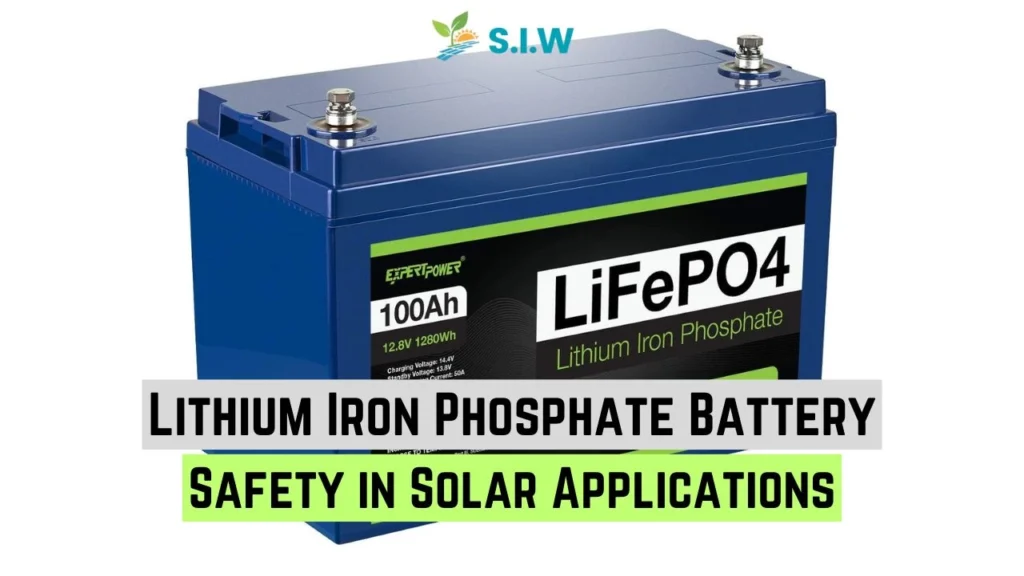Lithium Iron Phosphate (LiFePO4) batteries have emerged as one of the most reliable energy storage solutions for solar power systems. Their unique chemical composition offers a range of advantages over traditional lead-acid batteries and even other lithium-ion battery chemistries. However, the safety of these batteries remains a critical concern, especially in applications involving renewable energy. This article delves into the safety features of lithium iron phosphate batteries, their benefits for solar energy systems, and best practices for ensuring safe operation.
Understanding Lithium Iron Phosphate Batteries
LiFePO4 batteries are part of the lithium-ion family, known for their stable chemistry and enhanced safety profile. Unlike conventional lithium-ion batteries that can be prone to thermal runaway—a situation where the battery overheats and potentially catches fire—LiFePO4 batteries offer improved thermal stability. This stability arises from their robust crystal structure, which can withstand higher temperatures without decomposing.
Key Safety Features of LiFePO4 Batteries
- Thermal Stability
- LiFePO4 batteries have a higher thermal decomposition point compared to other lithium-ion batteries. This characteristic significantly reduces the risk of thermal runaway, making them safer for use in various environments, including outdoor solar installations.
- Lower Risk of Overcharging
- These batteries possess a flat voltage curve, meaning they can handle a slight overcharge without significant risk of damage or explosion. This feature makes them ideal for solar applications where charge controllers may inadvertently allow excess voltage to the batteries.
- Durability and Cycle Life
- LiFePO4 batteries are designed for long cycle life, often exceeding 2000 charge and discharge cycles. This longevity contributes to safety by reducing the frequency of battery replacement and the associated risks of battery failure during installation or disposal.
- Environmentally Friendly Composition
- The absence of heavy metals such as cobalt or lead makes LiFePO4 batteries a safer choice for the environment. In case of leakage, the materials used are less toxic, minimizing potential hazards to both human health and the ecosystem.
Benefits of LiFePO4 Batteries in Solar Systems
- Efficiency in Energy Storage
- LiFePO4 batteries have high discharge efficiency rates, typically around 90-95%. This efficiency translates into more effective energy storage, crucial for solar applications where energy capture and utilization are key.
- Fast Charging Capabilities
- These batteries can be charged quickly, which is particularly beneficial in solar applications where energy input can be intermittent. Their ability to handle rapid charging means that solar energy can be stored efficiently during peak sunlight hours.
- Wide Operating Temperature Range
- LiFePO4 batteries can operate effectively in a broader temperature range compared to other battery types. This versatility allows them to be used in various climates, from hot deserts to colder regions, without compromising safety or performance.
Best Practices for Ensuring Safety
To maximize the safety of lithium iron phosphate batteries in solar applications, it’s essential to adhere to a set of best practices:
Proper Installation and Maintenance
- Use Quality Components
- Always use high-quality charge controllers, inverters, and other components designed for compatibility with LiFePO4 batteries. Mismatched components can lead to operational issues and safety hazards.
- Routine Inspections
- Conduct regular inspections of the battery system. Look for signs of wear, corrosion, or damage that could compromise safety. Promptly addressing any issues can prevent larger problems down the line.
Effective System Design
- Adequate Ventilation
- Ensure proper ventilation in the battery storage area to dissipate any heat generated during operation. While LiFePO4 batteries have a low risk of overheating, maintaining airflow is a good safety practice.
- Monitoring Systems
- Incorporate battery management systems (BMS) that monitor voltage, current, temperature, and state of charge. A BMS can provide early warnings for potential issues and help prevent dangerous conditions.
Handling and Storage Guidelines
- Follow Manufacturer Recommendations
- Always adhere to the manufacturer’s guidelines for charging, discharging, and storing LiFePO4 batteries. These specifications are designed to maximize performance and safety.
- Training for Personnel
- Ensure that all personnel involved in the handling and maintenance of LiFePO4 batteries are adequately trained. Understanding the unique characteristics and risks associated with these batteries can prevent accidents.
Emergency Response and Risk Management
In the unlikely event of an incident involving lithium iron phosphate batteries, having a well-defined emergency response plan is crucial.
Fire Safety Measures
- Fire Extinguishers
- Equip the area with appropriate fire extinguishers suitable for lithium-based fires, such as Class D extinguishers. Standard water extinguishers may not be effective and can exacerbate the situation.
- Evacuation Plan
- Establish a clear evacuation plan for personnel in case of a battery-related incident. Regular drills can ensure that everyone knows how to respond swiftly and safely.
Environmental Considerations
- Proper Disposal
- Follow local regulations for the disposal of lithium iron phosphate batteries. While they are less hazardous than other battery types, proper recycling and disposal methods help prevent environmental contamination.
- Spill Response Kits
- Maintain spill response kits on-site, equipped with materials for safely containing and neutralizing any leaks from battery systems.
The Future of Lithium Iron Phosphate Batteries in Solar Energy
The safety and performance of lithium iron phosphate batteries position them as a leading choice for solar energy storage solutions. Their inherent stability, environmental benefits, and efficient energy storage capabilities make them ideal for a wide range of applications. By following best practices in installation, maintenance, and emergency preparedness, users can harness the full potential of LiFePO4 batteries while ensuring safety in their solar systems.
As the world increasingly moves towards sustainable energy solutions, lithium iron phosphate batteries will play a pivotal role in optimizing solar power efficiency and safety, paving the way for a greener future.








